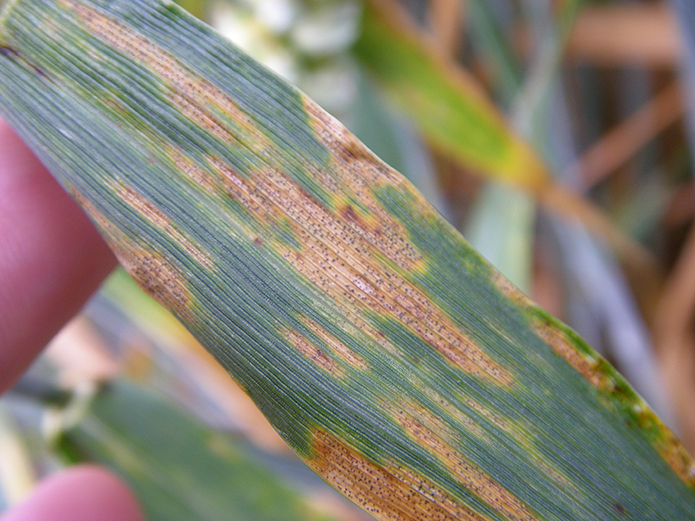Keeping one step ahead of resistant fungi
European researchers are joining forces to track the spread of resistance in the fungi that cause the wheat disease Septoria tritici blotch and to develop control methods that can help reduce dependence on fungicides.

The race is on between fungicides that can effectively control pathogenic fungi in wheat and the fungi themselves, which are pretty talented at re-inventing themselves to resist the fungicides that aim to control them.
A new European project that will address this problem. The project is coordinated by Teagasc in Ireland and the participants come from research institutions in Ireland, Denmark, Belgium, Sweden and Germany.
The aim of the project is to determine the level of resistance of Z. tritici in Europe and to develop robust and sustainable integrated pest management (IPM) strategies to control the pathogenic fungus. The three-year research project, entitled EURO-RES, has a total budget of €1,102,411 and has been granted €1,012,770 through the C-IPM second call.
Wheat production in northern Europe is reliant on the application of pesticides throughout the growing season. Fungicides account for approximately 25 percent of these applications, with the disease septoria tritici blotch (STB) as the primary target.
In the battle against this fungus in wheat, the available fungicides are under great pressure because only a few active ingredients are available. The development and spread of resistance to fungicides must be followed closely to ensure that the chosen solutions are not ones that accelerate the development of fungicide resistance. In this regard it is important to use cereal strains that have good disease resistance.
Developing IPM tools for the future
In addition to determining the level of resistance of Z. tritici populations, the project partners will analyse the dynamics of fungicide resistance at the molecular level, and will develop and test robust and sustainable IPM control strategies that minimise the risk of fungicide resistance development.
- Septoria has shown resistance to several important groups of fungicides. Coupled with this is the expectant decrease in the number of approved fungicide active ingredients available in the EU in the future. It is therefore crucial that we collaborate across borders to aspire for the best strategy to minimise further resistance development, says the Danish participant in the project senior researcher Lise Nistrup Jørgensen from the Department of Agroecology at Aarhus University.
The project’s collaboration between several different countries will take advantage of the differences between the partner countries with regard to fungicide sensitivity and the availability of specific fungicides. This situation offers a unique opportunity to identify the dynamics of resistance selection over local, regional and international scales.
The knowledge and experience this project generates will be made available through the Eurowheat knowledge hub.